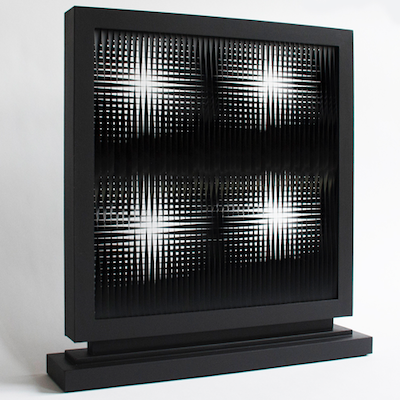


Details
Artist
Styles
Screen printing on mirror polished steel - Signed and numbered on the back - Printer Arte 3, Milano - Mounted suspension device. In original pcaket // Michelangelo Pistoletto's Amare (2006) is a screen print on mirror-polished steel, showcasing the artist’s signature use of reflective surfaces to engage viewers directly. The piece, measuring 25 x 113 cm, features abstract, curvilinear shapes outlined in black. Within these fluid forms, the word AMARE is spelled out using primary colors (blue, yellow, red, green, and orange) on different segments, highlighting the theme of love. The mirrored surface invites the viewer to become a part of the artwork, integrating their reflection with the concept of love and self-awareness. Pistoletto’s work often explores the interaction between art, space, and the observer.
Amare, 2006
form
Medium
Size
25 x 113 cm
- Inches
- Centimeters
Edition
Price
Details
Artist
Styles
Screen printing on mirror polished steel - Signed and numbered on the back - Printer Arte 3, Milano - Mounted suspension device. In original pcaket // Michelangelo Pistoletto's Amare (2006) is a screen print on mirror-polished steel, showcasing the artist’s signature use of reflective surfaces to engage viewers directly. The piece, measuring 25 x 113 cm, features abstract, curvilinear shapes outlined in black. Within these fluid forms, the word AMARE is spelled out using primary colors (blue, yellow, red, green, and orange) on different segments, highlighting the theme of love. The mirrored surface invites the viewer to become a part of the artwork, integrating their reflection with the concept of love and self-awareness. Pistoletto’s work often explores the interaction between art, space, and the observer.
- Recently Added
- Price (low-high )
- Price (high-low )
- Year (low-high )
- Year (high-low )
What is interactive art?
Interactive art is a form of art where the spectator is actively involved by the artist to achieve the artwork's purpose. This involvement can include allowing the visitor to walk around, in, or on the art installation, or even becoming a part of the artwork itself. Works in this category often feature computers, sensors, and interfaces that respond to various inputs such as meteorological changes, heat, motion, or other types of data programmed by the artist.













